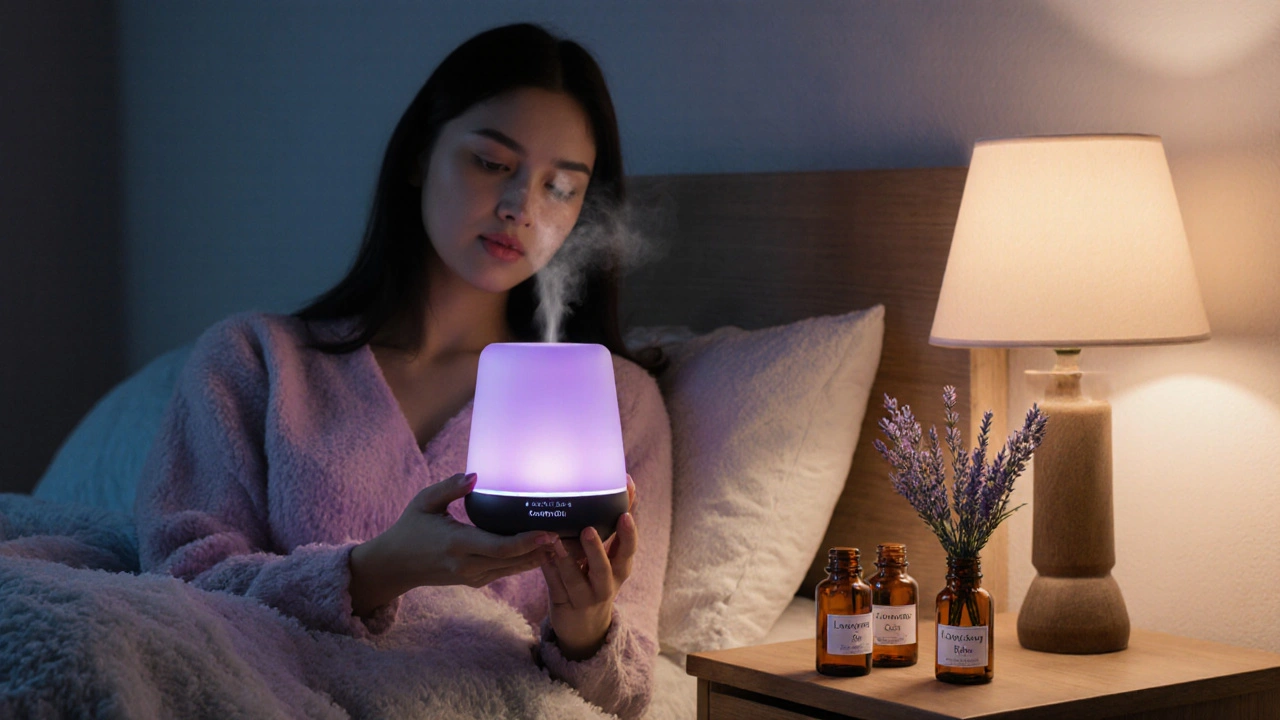
PMS Aromatherapy Selector
Quick Take
- Aromatherapy uses plant‑derived essential oils to calm the nervous system, which can lessen PMS cramps, mood swings, and fatigue.
- Lavender, clary sage, and rose oils have the strongest evidence for reducing menstrual pain and anxiety.
- Inhalation, topical massage, and diffuser use are the three safest application methods.
- Start with a low dilution (1‑2% carrier oil) and watch for skin reactions.
- Combining aromatherapy with light exercise and balanced nutrition boosts overall symptom relief.
Premenstrual Syndrome (PMS) hits millions of people each month, bringing cramps, bloating, irritability, and brain fog. While over‑the‑counter painkillers help some, many look for gentler, hormone‑friendly options. That’s where aromatherapy a practice that uses concentrated plant extracts called essential oils to influence mood, pain perception, and hormonal balance steps in. This guide walks through how aromatherapy works for PMS, which oils deliver the biggest impact, safe ways to use them, and a few DIY blends you can try tonight.
How Aromatherapy Supports PMS Relief
When you breathe in or apply an essential oil, tiny aromatic molecules interact with the olfactory receptors in your nose. Those receptors send signals straight to the limbic system - the brain area that controls emotions and stress responses. The result? A cascade of neurotransmitters (like serotonin and GABA) that can calm anxiety, diminish perceived pain, and even help regulate the menstrual hormone cycle.
Three physiological pathways matter most for PMS:
- Stress reduction: Cortisol spikes aggravate cramps and mood swings. Calming scents lower cortisol, giving your body a smoother hormonal ride.
- Pain modulation: Certain oils act like natural analgesics, influencing the body’s opioid receptors and easing uterine cramping.
- Hormone balance support: Some plant compounds have mild estrogenic activity, helping offset the progesterone‑dominant pre‑period phase.
Research from the Journal of Obstetrics & Gynecology (2023) showed that daily inhalation of lavender oil reduced self‑reported PMS severity scores by 30% compared to a placebo. Similar trials with clary sage reported 25% fewer painful uterine contractions. While more large‑scale studies are needed, the existing data suggests aromatherapy is a low‑risk, potentially high‑reward tool.
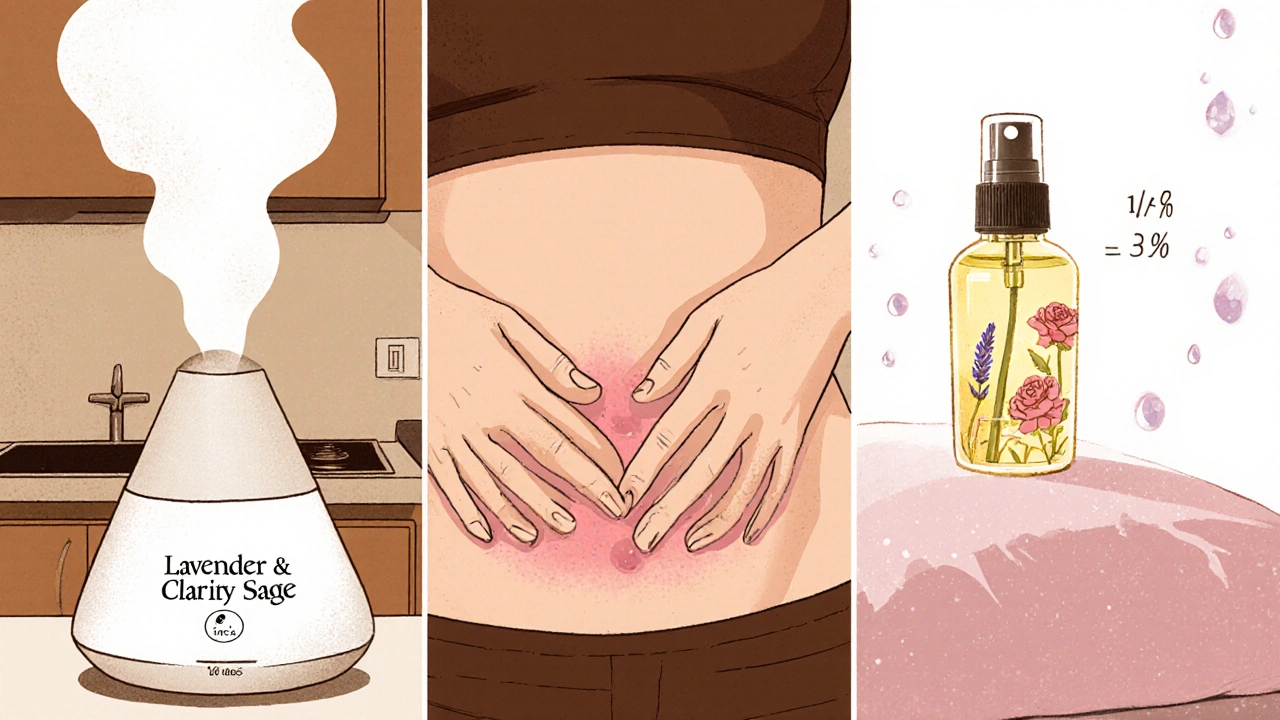
Top Essential Oils for PMS and How to Use Them
Below are the three oils most often recommended for PMS, along with their key benefits and safest application routes.
| Essential Oil | Primary PMS Benefit | Recommended Dilution | Best Application Method |
|---|---|---|---|
| Lavender calming, anti‑inflammatory oil derived from Lavandula angustifolia | Reduces anxiety and menstrual cramps | 1‑2% (3‑6 drops per teaspoon carrier) | Diffuser or gentle abdominal massage |
| Clary Sage estrogen‑balancing oil from Salvia sclarea | Alleviates uterine tightness, supports hormonal balance | 1‑2% (3‑6 drops per teaspoon carrier) | Abdominal massage or inhalation |
| Rose soothing oil extracted from Rosa damascena petals | Improves mood, eases breast tenderness | 2‑3% (6‑9 drops per teaspoon carrier) | Diffuser or pillow spray |
When you blend oils, keep the total dilution under 5% to avoid skin irritation. A carrier oil like sweet almond, jojoba, or fractionated coconut works well because it’s lightweight and non‑comedogenic.
Diffuser Inhalation
A diffuser disperses oil molecules into the air, letting you benefit without touching your skin. Add 3‑5 drops of lavender or a 1‑to‑1 mix of lavender and clary sage to a 100‑ml ultrasonic diffuser. Run it for 30 minutes while you read, work, or unwind before bedtime. The steady scent can lower cortisol levels, making it easier to fall asleep - a common PMS challenge.
Topical Massage
Massage directly targets the uterus‑surrounding muscles. Mix 4 drops of clary sage with 1 teaspoon of carrier oil, warm it in your palms, and massage gently in clockwise circles on the lower abdomen. Follow with 2 drops of lavender for added calm. Do this once a day from day 18 of your cycle to the start of your period.
Pillow or Bed Spray
Spray a few drops of rose oil onto your pillowcase before bed. The subtle fragrance works overnight, boosting serotonin production and reducing night‑time breast soreness.
Safety & Precautions
While essential oils are natural, they’re still potent chemicals. Here’s how to stay safe:
- Patch test first: Apply a 1% dilution to the inner forearm, wait 24hours, and check for redness or itching.
- Pregnant or breastfeeding users: Talk to a healthcare provider before using clary sage, as it can stimulate uterine activity.
- Avoid ocular contact: Oils can cause severe irritation if they get into the eyes.
- Quality matters: Choose therapeutic‑grade, steam‑distilled oils without synthetic additives. Look for batch transparency from manufacturers.
- Storage: Keep bottles in a cool, dark place to maintain potency.
For a quick reference, see the safety chart below.
| Oil | Pregnancy | Skin Sensitivity | Maximum Daily Use |
|---|---|---|---|
| Lavender | Generally safe | Low | 10drops total |
| Clary Sage | Consult practitioner | Moderate | 8drops total |
| Rose | Safe in moderate amounts | Low | 12drops total |
DIY Aromatherapy Recipes for Your Cycle
Below are three ready‑to‑make blends. Adjust the number of drops based on your personal tolerance.
-
Calm‑Night Diffuser Blend
- 3 drops lavender
- 2 drops rose
- 2 drops frankincense (optional for deeper relaxation)
- Add to 100ml water in your diffuser, run for 30minutes before sleep.
-
Uterine‑Ease Abdominal Massage Oil
- 1 tsp sweet almond oil (carrier)
- 4 drops clary sage
- 2 drops lavender
- Warm in hands, massage abdomen clockwise for 5minutes.
-
Morning Mood Boost Spray
- 30ml distilled water (spray bottle)
- 3 drops rose
- 3 drops orange (sweet orange) for uplifting aroma
- Shake well, mist over clothing or pillow before stepping out.
If you notice any irritation, discontinue use and consult a professional. Consistency is key - most users report noticeable improvement after 2‑3 weeks of regular application.

Frequently Asked Questions
Can aromatherapy replace NSAIDs for menstrual cramps?
Aromatherapy can lower pain perception but isn’t a full substitute for NSAIDs in severe cases. Many women combine low‑dose ibuprofen with a lavender‑clary sage massage for blended relief.
How long before my period should I start using essential oils?
Begin the routine around day18 of a typical 28‑day cycle - roughly a week before symptoms usually start. Adjust based on your personal pattern.
Are there any oils I should avoid during PMS?
Strong stimulants like peppermint or eucalyptus can heighten headache sensitivity for some women. Test them in small amounts before full use.
Is it safe to use essential oils if I have a hormone‑sensitive condition?
If you have conditions like endometriosis or PCOS, consult your physician. Some estrogen‑like oils (e.g., clary sage) may interact with hormonal therapies.
Do I need a fancy diffuser, or will a simple bowl work?
A ceramic or glass bowl with hot water can release scent, but ultrasonic diffusers provide a finer mist and last longer. Choose what fits your budget.
By integrating aromatherapy into your monthly self‑care routine, you tap into a natural pathway that calms the mind, eases the body, and supports hormonal balance. Start small, track how you feel, and adjust the blends as your cycle evolves. Your next period could be a lot calmer - and a lot more fragrant.
katie clark
While the premise of aromatherapy for PMS is intriguing, the article glosses over the paucity of rigorous clinical trials. A more discerning readership would appreciate a nuanced discussion of phytochemical variability.
Carissa Engle
Aromatherapy's allure lies in its promise of natural relief without synthetic chemicals. Yet the scientific community remains divided over the magnitude of its efficacy. The article cites a 2023 Journal of Obstetrics & Gynecology study yet fails to mention its modest sample size. A thirty‑four participant cohort cannot fully capture the hormonal complexity of a diverse population. Moreover, the placebo effect in scent‑based interventions is notoriously strong. Participants often report subjective improvement simply because they anticipate comfort. When you factor in the variability of oil composition due to harvest conditions, the reproducibility of outcomes becomes questionable. Essential oils extracted via steam distillation may contain different terpene profiles than those obtained by cold‑pressing. Such chemical differences can alter both therapeutic potential and skin sensitization risks. The article recommends a 1‑2% dilution but neglects to address cumulative exposure over a menstrual cycle. Repeated daily applications could inadvertently increase systemic absorption, a point worth monitoring. For individuals with hormone‑sensitive conditions, even subtle estrogenic activity may have downstream effects. The safety chart is helpful yet omits contraindications for certain medications like anticoagulants. Readers should also be wary of low‑quality oils that contain synthetic additives masquerading as “essential.” Practically, a diffuser run for thirty minutes may be pleasant but contributes minimally to systemic hormone modulation. In summary, the practice holds promise but demands rigorous, larger‑scale trials before mainstream endorsement.
Dervla Rooney
I appreciate the balanced overview and would add that keeping a simple symptom diary alongside aromatherapy use can help pinpoint which oil resonates most with your body.
Johnny Ha
Big pharma won’t tell you that cheap lavender can actually cut down on prescription painkillers.
Darius Reed
Yo, i tried the clary sage mix and it felt great but i think i used too much oil at first – my skin got a lil itchy before it calmed down.
Karen Richardson
The article correctly states that lavender reduces anxiety, however the dilution recommendation should be clarified as “3‑6 drops per teaspoon of carrier oil” rather than the ambiguous “1‑2% (3‑6 drops per teaspoon carrier)”.


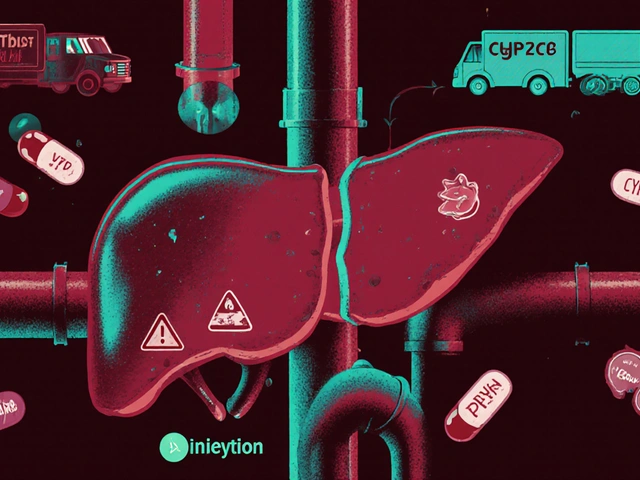
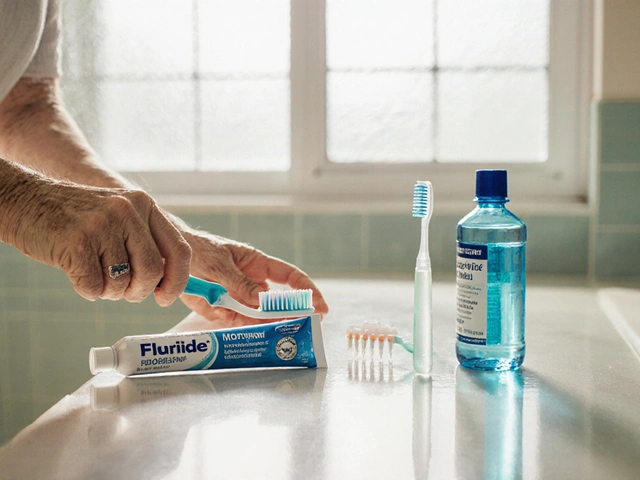
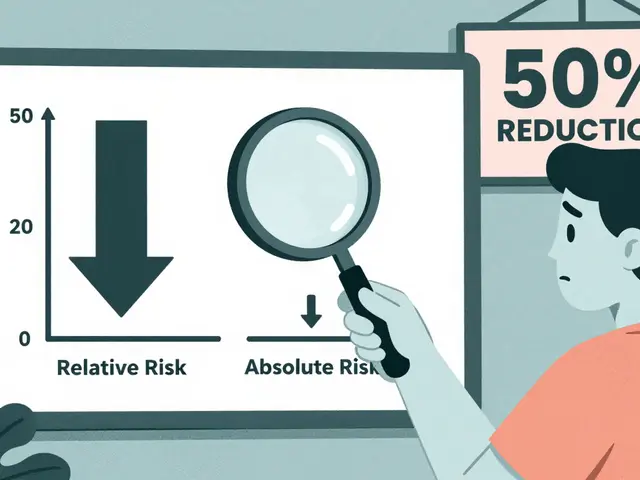

Write a comment